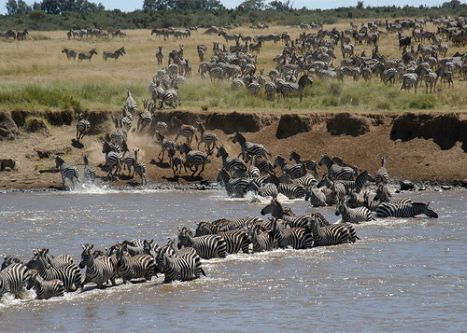
Migration is not bound to a particular definition. We try to categorize particular movements as migration but it is not always possible. Animals change their habitats and shift their base from one place to another for different reasons. Like humans, animals also try to find the best facilities for themselves and their offspring. Generally when animals go from one place to another for some reason at a certain season, it is termed as migration. Animals and birds tend to follow a familiar route and always go to the same place for the same purpose. They are bound to the habits of migration but sometimes it is difficult to determine if their movements can be categorized under migration or not.
The primary and basic reason for animals to migrate is so that they can get a better chance of survival. Survival of the fittest is the rule that applies to animals and birds. They often migrate at a particular season because their habitat and the surrounding region become too cold and they fly or move to warmer places. This also increases their chances of getting food. Wild beasts and African elephants migrate in search of minerals. Salts and minerals are a vital source of nutrients and help them keep fit.
Many animals and birds shift base to lay eggs and give birth to their babies. Emperor penguins, grey whales and green turtles migrate for reproduction purposes. The Australian giant cuttlefish and sperm whales migrate because they try to find mates for reproduction by changing their sphere of interaction. Sometimes insects and animals migrate because their old habitat gets overpopulated and cannot help them sustain. Adverse climate and the need to find shelter makes most birds fly to places where the climate is moderate. Some animals and birds cross huge regions while migrating and some just shift from the top of a mountain to the base.